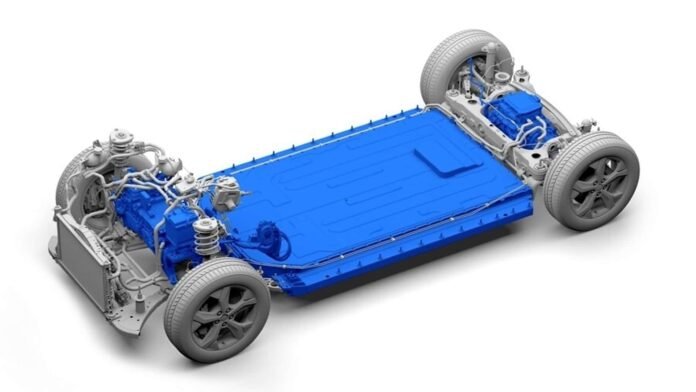- Before you even charge your EV for the first time, the battery undergoes controlled charging cycles in the factory itself.
- These initial charging cycles are slow and time-consuming as they occur at low currents.
- A Toyota-funded study discovered that high currents during initial charging phases improve performance and lifespan.
The electric vehicle movement isn’t linear. Uneven sales, anxiety over driving range, limited charger availability and a presidential election where EVs are a political hot potato may have dampened some spirits. But what’s unfolding on the consumer side of things contrasts sharply with behind-the-scenes efforts, especially when it comes to battery research and development.
Last week, we covered a study where a Tesla-funded lab discovered that consistently using lithium-iron phosphate (LFP) batteries at a higher state of charge negatively affected battery health and degradation, contradicting existing notions about LFP charging practices. Now we have another study this week, funded by the Toyota Research Institute under its Accelerated Materials Design and Discovery program, that uncovers more about EV batteries.
Published in scientific research paper Joule, the study said there’s a novel way to boost battery health and minimize degradation. Researchers from the SLAC-Stanford Battery Center (formerly Stanford Linear Accelerator Center) said that charging lithium-ion batteries for the very first time at unusually high speeds extends their lifespan by an average of 50% and up to a maximum of 70%.
The study said: “Formation is a critical step in battery manufacturing. During this process, lithium inventory is consumed to form the solid electrolyte interphase (SEI), which in turn determines the battery lifetime… Surprisingly, high-formation charge current on the first cycle extends battery cycle life by an average of 50%.” All this may sound geeky and gibberish. But here’s what that means in simple terms.
Before you even plug in your EV for the first time to charge the battery, the pack undergoes a critical step in the manufacturing process called “formation,” which the paragraph above refers to. This usually happens at the end of the production process where the battery pack’s initial, carefully controlled, charging and discharging cycles take place.

InsideEVs
The initial charging cycles stabilize the battery pack and help activate the materials within the cells. This process impacts the battery’s performance, longevity and overall quality. It’s like intricately tuning a musical instrument before it can go on the stage and perform. The tuning and calibration is key because it influences the outcome.
During the research, battery scientists from SLAC-Stanford, Toyota Research Institute, the Massachusetts Institute of Technology and the University of Washington ran 186 charging and discharging cycles across 62 formation protocols. When high current was pumped into the pack for the very first time, the cells actually lost some of their lithium content—as much as 30% compared to 9% with traditional first-charging methods.
But “this first-cycle lithium loss is not in vain,” SLAC-Stanford wrote in a blog post. “The lost lithium becomes part of the SEI that forms on the surface of the negative electrode during the first charge.” This layer basically protects the negative electrode where lithium loss can get accelerated over time. That has a positive effect overall on the pack’s lifespan.

The report said that’s the opposite of what manufacturers usually do, which is giving batteries their first charge with a low current. This makes the process time-consuming and is one of the primary bottlenecks in battery manufacturing. Without proper formation, a battery would not function as intended, making this an essential aspect of production. But now there’s apparently a way to save time and possibly even extend battery age.
With this new technique, as lithium loss occurs due to a high initial current, there would be “additional headspace in both electrodes.” This would ultimately “help improve battery performance and lifespan.”

Source link by Battery Tech – News and Trends | InsideEVs
Author
#Boost #Battery #Health #Unexpected #Step #Groundbreaking






